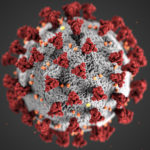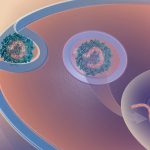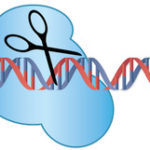Trend Chart On Innovative Bioindustries – June 2020, 23rd
FEATURE STORY
 ● Draft landscape of COVID-19 candidate vaccines
● Draft landscape of COVID-19 candidate vaccines
This landscape document (published on June 16th) has been prepared by the World Health Organization (WHO) for information purposes only concerning the 2019-2020 global of the novel coronavirus. Inclusion of any particular product or entity in any of these landscape documents does not constitute, and shall not be deemed or construed as, any approval or endorsement by WHO of such product or entity (or any of its businesses or activities). While WHO takes reasonable steps to verify the accuracy of the information presented in these landscape documents, WHO does not make any (and hereby disclaims all) representations and warranties regarding the accuracy, completeness, fitness for a particular purpose (including any of the aforementioned purposes), quality, safety, efficacy, merchantability and/or non-infringement of any information provided in these landscape documents and/or of any of the products referenced therein. WHO also disclaims any and all liability or responsibility whatsoever for any death, disability, injury, suffering, loss, damage or other prejudice of any kind that may arise from or in connection with the procurement, distribution or use of any product included in any of these landscape documents. For further information
Related Informations / Publications
–Vaccine. 2020 Jun 26;38(31):4783-4791. Consensus Summary Report for CEPI/BC March 12-13, 2020 Meeting: Assessment of Risk of Disease Enhancement With COVID-19 Vaccines. Lambert PH et al. University of Geneva, Switzerland. Link: Abstract – Full Text
–Life Sci. 2020 Jun 11;256:117956. Vaccination Strategies to Combat Novel Corona Virus SARS-CoV-2. Pandey SC et al. Kumaun University, Bhimtal Campus, Nainital, Uttarakhand, India
Results/Comments: In this review researchers have summarized various vaccine candidates i.e., nucleotide, subunit and vector based as well as attenuated and inactivated forms, which have already been demonstrated their prophylactic efficacy against MERS-CoV and SARS-CoV. Link: Abstract – Full Text
–Biomed J. 2020 May 30:S2319-4170(20)30085-8. Fighting COVID-19: A Quick Review of Diagnoses, Therapies, and Vaccines. Shih et al. National Cheng Kung University, Tainan, Taiwan
Results/Comments: Before the efficacy of such vaccines in humans is demonstrated, strong international coordination and collaboration among studies, pharmaceutical companies, regulators, and governments are needed to limit further damage due the emerging SARS-CoV-2 virus. Link: Abstract – Full Text
–bioRxiv. 2020 May 28:2020.05.28.121640. Single-dose Replicating RNA Vaccine Induces Neutralizing Antibodies Against SARS-CoV-2 in Nonhuman Primates. Erasmus JH et al. University of Washington, Seattle, WA, USA. Link: Abstract – Full Text
Gene Therapy
 ● An overview of development in gene therapeutics in China
● An overview of development in gene therapeutics in China
After setbacks related to serious adverse events 20 years ago, gene therapy is now coming back to the central stage worldwide. In the past few years, gene therapy has shown astonishing efficacy against genetic diseases and cancers. In history, China carried out the world’s second gene therapy clinical trial in 1991 for hemophilia B and approved the world’s first gene therapy product—Gendicine—in 2003. In recent years, numerous efforts have been made on gene editing. In this publication, Chinese researchers reviewed the past of gene therapy in China and highlighted recent advances. They also discussed the regulations and future perspectives of gene therapy in China. The review appeared in June 11th online issue of Gene Ther
Related informations / Publications
-Adv Drug Deliv Rev. 2020 May 1:S0169-409X(20)30030-2. Delivery of CRISPR/Cas Systems for Cancer Gene Therapy and Immunotherapy. Song X et al. Sichuan University, Chengdu 610041, PR China
Results/Comments: The prospects for the development of physical methods, viral vectors and non-viral vectors for delivery of CRISPR/Cas systems are reviewed, and promising advances in cancer treatment using CRISPR/Cas systems are discussed. Link: Abstract
–Gene Ther. 2020 Apr 27. doi: 10.1038/s41434-020-0148-6. Gene Therapy for Cardiovascular Diseases in China: Basic Research. Deng J et al. Shanghai University, Shanghai, 200444, China
Results/Comments: This review summarizes the latest research about gene therapy of proteins, epigenetics, including noncoding RNAs and genome-editing technology in myocardial infarction, cardiac ischemia-reperfusion injury, atherosclerosis, muscle atrophy, and so on in China. Link: Abstract
 ● In vivo lentiviral vector gene therapy for haemophilia
● In vivo lentiviral vector gene therapy for haemophilia
There are some limitations associated with AAV vectors, such as their predominantly episomal nature in the nucleus of target cells and the widespread pre-existing immunity against the parental virus in humans. By contrast, HIV-derived lentiviral vectors (LV) integrate into the target cell chromatin and are maintained as the cells duplicate their genome, a potential advantage for establishing long-term expression especially in paediatric patients, in which the liver undergoes substantial growth. Systemic administration of LV allowed stable multi-year transgene expression in the liver of mice and dogs. More recently, improved phagocytosis-shielded LV were generated, which, following intravenous administration to non-human primates, showed selective targeting of liver and spleen and enhanced hepatocyte gene transfer, achieving up to supra-normal activity of both human FVIII and FIX transgenes. These studies support further preclinical assessment and clinical evaluation of in vivo liver-directed LV gene therapy for haemophilia. The review appeared in June 14th online issue of Haemophilia.
Related Informations / Publications
–Front Immunol. 2020 Apr 15;11:494. The Immune Response to the fVIII Gene Therapy in Preclinical Models. Patel SR et al. Emory University, Atlanta, GA, USA. Link: Abstract – Full Text
–Sci Transl Med. 2019 May 22;11(493):eaav7325. Phagocytosis-shielded Lentiviral Vectors Improve Liver Gene Therapy in Nonhuman Primates. Milani M et al. IRCCS San Raffaele Scientific Institute, 20132 Milan, Italy.Link: Abstract
–Hum Gene Ther. 2018 Oct;29(10):1183-1201. Preclinical Development of a Hematopoietic Stem and Progenitor Cell Bioengineered Factor VIII Lentiviral Vector Gene Therapy for Hemophilia A. Doering CB et al. Emory University , Atlanta, Georgia, USA. Link: Abstract – Full Text
 ● AAV-Based Gene Therapy Products: Ongoing Clinical Trials
● AAV-Based Gene Therapy Products: Ongoing Clinical Trials
BioPharmAnalyses and OctopusyX BioConsulting are proud to announce the launch of their latest report:”AAV-based gene therapy Products: Ongoing Clinical Trials“. This 205-page report provides you with a unique exhaustive overview of 116 ongoing trials for the treatment of 40 diseases (as of June 2020). More than 80 products from 49 companies and academic institutions are described.
Areas covered: Cardiovascular Diseases, Hematological Diseases, Hepatic Diseases, Infectious Diseases, inherited Metabolic Diseases, Lysosomal Diseases, Neurological Diseases, Neuromuscular Diseases and Ophthalmological Diseases
You can click here to get sample pages and click here to get the order form (€590, excl. VAT)
● Delivery of oligonucleotides to the liver – from research to registered therapeutic drug
Targeted delivery of oligonucleotides to liver hepatocytes using GalNAc conjugates that bind to the asialoglycoprotein receptor has become a breakthrough approach in the therapeutic oligonucleotide field. This technology has led to the approval of givosiran for the treatment of acute hepatic porphyria and there are another seven conjugates in registrational review or phase 3 trials and at least another 21 conjugates at earlier stages of clinical development. This review highlights some of the recent chemistry and preclinical advances in this space leading to this large number of clinical candidates against a diverse range of targets in liver hepatocytes. The review focusses on the use of this delivery system for siRNAs and antisense molecules that cause down regulation of target mRNA and protein. A number of other approaches such as anti-microRNAs and small activating RNAs are starting to exploit the technology broadening the potential of this approach for therapeutic oligonucleotide intervention. The review appeared in June 16th online issue of Mol Ther.
Related Informations / Publications
–N Engl J Med. 2020 Jun 11;382(24):2289-2301. Phase 3 Trial of RNAi Therapeutic Givosiran for Acute Intermittent Porphyria. Balwani M et al. Icahn School of Medicine at Mount Sinai, New York, USA. Link: Abstract
–MAR 2020: Alnylam Announces Approval of GIVLAARI® (givosiran) in the European Union for the Treatment of Acute Hepatic Porphyria (AHP) in Adults and Adolescents. Link: Press Release
–Drugs. 2020 Feb;80(3):335-339. Givosiran: First Approval. Scott LJ. Springer Nature, Private Bag 65901, Mairangi Bay, Auckland, 0754, New Zealand
Results/Comments: This article summarizes the milestones in the development of givosiran leading to this first approval for the treatment of adults with AHP. Link: Abstract
–NOV 2019: FDA approves givosiran for acute hepatic porphyria. Link: FDA
Disruptive Technologies
 ● Valproic Acid significantly improves CRISPR/Cas9-Mediated gene editing
● Valproic Acid significantly improves CRISPR/Cas9-Mediated gene editing
The clustered regularly interspaced short palindromic repeats (CRISPR)/Cas9 system has emerged as a powerful technology, with the potential to generate transgenic animals. Particularly, efficient and precise genetic editing with CRISPR/Cas9 offers immense prospects in various biotechnological applications. In this publication, researchers report that the histone deacetylase inhibitor valproic acid (VPA) significantly increases the efficiency of CRISPR/Cas9-mediated gene editing in mouse embryonic stem cells and embryos. This effect may be caused through globally enhanced chromatin accessibility, as indicate by histone hyperacetylation. Taken together, the results suggest that VPA can be used to increase the efficacy of CRISPR/Cas9 in generating transgenic systems. The results appeared in June 10th online issue of Cells.
Related Informations / Publications
–Acta Pharmacol Sin. 2020 Jun 18. A Simple, Quick, and Efficient CRISPR/Cas9 Genome Editing Method for Human Induced Pluripotent Stem Cells. Geng BC et al. Huazhong University of Science and Technology, Wuhan, 430022, China. Link: Abstract
Clinical Trials / Datas
 ● Recent 4 Year Update of ongoing phase 1/2 study of Valoctocogene Roxaparvovec GT for severe hemophilia A
● Recent 4 Year Update of ongoing phase 1/2 study of Valoctocogene Roxaparvovec GT for severe hemophilia A
BioMarin Pharmaceutical announced on June 17th additional data from its previously reported four-year update of an open-label Phase 1/2 study of valoctocogene roxaparvovec, an investigational gene therapy treatment for severe hemophilia A. The results were presented during a late-breaking oral presentation at the World Federation of Hemophilia (WFH) Virtual Summit. In the six study participants who were previously on Factor VIII prophylaxis in the 6e13 vg/kg cohort, the data showed substantial and sustained reductions in bleeding that required Factor VIII infusions. Similarly, in the six study participants in the 4e13 vg/kg cohort, the data showed substantial and sustained reductions in bleeding requiring Factor VIII infusions following treatment with valoctocogene roxaparvovec. All participants remain off Factor VIII prophylaxis therapy. For further information. See also Mol Ther, June 2020
Related informations / Publications
–Res Pract Thromb Haemost. 2020 Apr 28;4(4):446-454. Bispecific Antibodies and Advances in Non-Gene Therapy Options in Hemophilia. Shima M et al. Nara Medical University Kashihara City Nara Japan. Link: Abstract – Full Text
–Cochrane Database Syst Rev. 2020 Apr 28;4(4):CD010822. Gene Therapy for Haemophilia. Sharma A et al. St. Jude Children’s Research Hospital, Memphis, Tennessee, USA. Link: Abstract
–Mol Ther Methods Clin Dev. 2019 Apr 11;13:440-452. The Impact of Pre-existing Immunity on the Non-clinical Pharmacodynamics of AAV5-Based Gene Therapy. Long BR et al. BioMarin Pharmaceutical Inc., Novato, CA, USA.
Results/Comments: The biological threshold for tolerable AAV5 antibody levels varied between individual animals and should be evaluated further in clinical studies. Link: Abstract – Full Text
Industrial Landscape & Agreements
 ● German Federal Government invests 300 M€ in CureVac
● German Federal Government invests 300 M€ in CureVac
The German Federal Minister for Economic Affairs and Energy, Peter Altmaier, and Dietmar Hopp, SAP co-founder and co-founder of the investment company dievini Hopp BioTech holding GmbH & Co. KG, announced on June 15th that the Federal Republic of Germany will invest 300 million Euros in the biopharmaceutical company CureVac ; a pioneer in the preclinical and clinical development of mRNA-based drugs. Details of the investment, which will be made by the Kreditanstalt für Wiederaufbau (KfW), have been laid out in a definitive draft agreement. The funds from the capital increase will be used by CureVac for the further development of the Company’s proprietary pipeline and mRNA platform technology and the expansion of business activities. Under the agreement, the KfW will hold a stake of around 23 percent in CureVac. For further information
Related Informations / Publications
–Virol Sin. 2020 Jun 10:1-4. mRNA Vaccines: Possible Tools to Combat SARS-CoV-2. Yi C et al. The Affiliated Hospital of Nanjing University of Chinese Medicine, Nanjing, 210003, China. Link: Full Text–
JUN 2020: CureVac Receives Regulatory Approval from German and Belgian Authorities to Initiate Phase 1 Clinical Trial of its SARS-CoV-2 Vaccine Candidate
Results/Comments: CureVac´s mRNA vaccine candidate utilizes nucleotides without chemical modifications in the mRNA and is designed to provide a strong and balanced activation of the immune system. The mRNA encodes the full-length spike protein of SARS-CoV-2 and is formulated with lipid nanoparticles. Link: Press Release
–MAY 2020: CureVac´s Optimized mRNA Platform Provides Positive Pre-Clinical Results at Low Dose for Coronavirus Vaccine Candidate. Link: Press Release
–MAR 2020: CureVac focuses on the development of mRNA-based coronavirus vaccine to protect people worldwide. Link: Press Release
 ● Emergent BioSolutions to Invest $75 Million in Canton site and expand viral vector and gene therapy capability
● Emergent BioSolutions to Invest $75 Million in Canton site and expand viral vector and gene therapy capability
Emergent BioSolutions announced on June 18th that it will further strengthen its contract development and manufacturing (CDMO) capabilities by expanding into viral vector and gene therapy. The company will invest $75 million in its Canton, Massachusetts facility, which is focused on the development and manufacturing of drug substance for live viral vaccines, including the company’s smallpox vaccine. The investment will include a state-of-the-art, multi-suite operation up to 1000L scale. Emergent’s infrastructure and proven track record in development, manufacturing, and commercialization of solutions that address public health threats provide the foundation for differentiated services. The company plans to provide full molecule-to-market CDMO services for viral vector and gene therapy innovators, by offering development services out of its Gaithersburg location, drug substance manufacturing out of Canton, and drug product manufacturing at its Rockville location, which is in the midst of a recently announced significant expansion that is scheduled to be operational at the end of 2021. For further information
Related Informations / Publications
–JUN 2020: Emergent BioSolutions Signs Agreement to be U.S. Manufacturing Partner for AstraZeneca’s COVID-19 Vaccine Candidate
Results/Comments: Under the agreement, valued at approximately $87 million, Emergent will provide development services, technology transfer, analytical testing, drug substance process and performance qualification and will reserve certain large-scale manufacturing capacity through 2020. Link: Press Release
–APR 2020: Emergent BioSolutions Signs Agreement to be U.S. Manufacturing Partner for Johnson & Johnson’s Lead Vaccine Candidate for COVID-19. Link: Press Release
–MAR 2020: Emergent BioSolutions Signs Development and Manufacturing Agreement with Vaxart for their Experimental Oral Vaccine Candidate for Coronavirus Disease. Link: Press Release
● BridgeBio Pharma and University of Florida establish collaboration to advance therapies for genetically driven diseases
BridgeBio Pharma announced on June 18th that it has entered into a strategic collaboration with the University of Florida to translate research in genetically driven disease towards clinical development and potential commercialization. The partnership combines University of Florida’s prowess in studying genetically driven disease, including its capabilities in gene therapy, with BridgeBio’s expertise in efficiently advancing therapeutics from the academic laboratory through preclinical studies and into human testing. BridgeBio will provide sponsorship to select research programs around diseases with a genetic basis, including gene therapies and large and small molecules. The company will provide guidance for sponsored programs around medicinal chemistry for small-molecule hit optimization, strategies to modify or formulate a potential biologic therapy or approaches for testing non-optimized viral vectors. BridgeBio may conduct proof-of-concept studies for lead therapeutic compounds in relevant mammalian models. For further information
Related informations / Publications
–JUN 2020: BridgeBio Pharma, Inc. Enters Into Collaboration Agreement With Johns Hopkins University to Accelerate Development of New Medicines in Genetically Driven Diseases. Link: Press Release
–JUN 2020: BridgeBio Pharma’s ML Bio Solutions Announces Dosing of First Subject in Phase 1 Clinical Trial of BBP-418 For Limb Girdle Muscular Dystrophy Type 2i.
Results/Comments: ML Bio Solutions’ sponsored lead-in study is enrolling patients with LGMD2i across twelve sites in the U.S. and internationally, in collaboration with the LGMD-GRASP consortium. Link:Press Release
Fundraising
 ● Korean CHA Biotech to raise 62MUS$ to bolster CDMO business
● Korean CHA Biotech to raise 62MUS$ to bolster CDMO business
CHA Biotech said on June 17th that it aims to raise a total of 75 billion won ($62 million) through issuances of bonds with option to equity swap to strengthen contract development and manufacturing servicing for global gene therapy developers, the Korean stem cell research company said in a regulatory filing on June 16th. The new funds will be raised from 12 designated institutions by Friday through the issuance of 25 billion won of convertible bonds (CB) and 50 billion won of bonds with warrants (BW). Of these, 50 billion won will go to its U.S. affiliate Matica Biotechnology as working capital for business growth and fund for GMP facility expansion. The remainder will be used to expand infrastructure for future CDMO business. CHA Biotech established Matica Biotechnology in the U.S. to produce viral vectors for cell gene therapies.
Related informations / Publications
–AUG 2019: CHA Biotech wins patent for placenta-derived mesenchymal stem cells. Link: Korean Biomedical Review
–JUN 2019: CHA Biotech to transfer SCRMI’s shares, technology to AIRM. Link: Korean Biomedical Review
You can also click here to get full-page newsletter.
© BioPharmAnalyses – OctopusyX-bioConsuting
Trend Chart On Innovative Bioindustries – June 2020, 23rd
Trend Chart On Innovative Bioindustries – June 2020, 23rd
FEATURE STORY
 ● Draft landscape of COVID-19 candidate vaccines
● Draft landscape of COVID-19 candidate vaccines
This landscape document (published on June 16th) has been prepared by the World Health Organization (WHO) for information purposes only concerning the 2019-2020 global of the novel coronavirus. Inclusion of any particular product or entity in any of these landscape documents does not constitute, and shall not be deemed or construed as, any approval or endorsement by WHO of such product or entity (or any of its businesses or activities). While WHO takes reasonable steps to verify the accuracy of the information presented in these landscape documents, WHO does not make any (and hereby disclaims all) representations and warranties regarding the accuracy, completeness, fitness for a particular purpose (including any of the aforementioned purposes), quality, safety, efficacy, merchantability and/or non-infringement of any information provided in these landscape documents and/or of any of the products referenced therein. WHO also disclaims any and all liability or responsibility whatsoever for any death, disability, injury, suffering, loss, damage or other prejudice of any kind that may arise from or in connection with the procurement, distribution or use of any product included in any of these landscape documents. For further information
Related Informations / Publications
–Vaccine. 2020 Jun 26;38(31):4783-4791. Consensus Summary Report for CEPI/BC March 12-13, 2020 Meeting: Assessment of Risk of Disease Enhancement With COVID-19 Vaccines. Lambert PH et al. University of Geneva, Switzerland. Link: Abstract – Full Text
–Life Sci. 2020 Jun 11;256:117956. Vaccination Strategies to Combat Novel Corona Virus SARS-CoV-2. Pandey SC et al. Kumaun University, Bhimtal Campus, Nainital, Uttarakhand, India
Results/Comments: In this review researchers have summarized various vaccine candidates i.e., nucleotide, subunit and vector based as well as attenuated and inactivated forms, which have already been demonstrated their prophylactic efficacy against MERS-CoV and SARS-CoV. Link: Abstract – Full Text
–Biomed J. 2020 May 30:S2319-4170(20)30085-8. Fighting COVID-19: A Quick Review of Diagnoses, Therapies, and Vaccines. Shih et al. National Cheng Kung University, Tainan, Taiwan
Results/Comments: Before the efficacy of such vaccines in humans is demonstrated, strong international coordination and collaboration among studies, pharmaceutical companies, regulators, and governments are needed to limit further damage due the emerging SARS-CoV-2 virus. Link: Abstract – Full Text
–bioRxiv. 2020 May 28:2020.05.28.121640. Single-dose Replicating RNA Vaccine Induces Neutralizing Antibodies Against SARS-CoV-2 in Nonhuman Primates. Erasmus JH et al. University of Washington, Seattle, WA, USA. Link: Abstract – Full Text
Gene Therapy
 ● An overview of development in gene therapeutics in China
● An overview of development in gene therapeutics in China
After setbacks related to serious adverse events 20 years ago, gene therapy is now coming back to the central stage worldwide. In the past few years, gene therapy has shown astonishing efficacy against genetic diseases and cancers. In history, China carried out the world’s second gene therapy clinical trial in 1991 for hemophilia B and approved the world’s first gene therapy product—Gendicine—in 2003. In recent years, numerous efforts have been made on gene editing. In this publication, Chinese researchers reviewed the past of gene therapy in China and highlighted recent advances. They also discussed the regulations and future perspectives of gene therapy in China. The review appeared in June 11th online issue of Gene Ther
Related informations / Publications
-Adv Drug Deliv Rev. 2020 May 1:S0169-409X(20)30030-2. Delivery of CRISPR/Cas Systems for Cancer Gene Therapy and Immunotherapy. Song X et al. Sichuan University, Chengdu 610041, PR China
Results/Comments: The prospects for the development of physical methods, viral vectors and non-viral vectors for delivery of CRISPR/Cas systems are reviewed, and promising advances in cancer treatment using CRISPR/Cas systems are discussed. Link: Abstract
–Gene Ther. 2020 Apr 27. doi: 10.1038/s41434-020-0148-6. Gene Therapy for Cardiovascular Diseases in China: Basic Research. Deng J et al. Shanghai University, Shanghai, 200444, China
Results/Comments: This review summarizes the latest research about gene therapy of proteins, epigenetics, including noncoding RNAs and genome-editing technology in myocardial infarction, cardiac ischemia-reperfusion injury, atherosclerosis, muscle atrophy, and so on in China. Link: Abstract
 ● In vivo lentiviral vector gene therapy for haemophilia
● In vivo lentiviral vector gene therapy for haemophilia
There are some limitations associated with AAV vectors, such as their predominantly episomal nature in the nucleus of target cells and the widespread pre-existing immunity against the parental virus in humans. By contrast, HIV-derived lentiviral vectors (LV) integrate into the target cell chromatin and are maintained as the cells duplicate their genome, a potential advantage for establishing long-term expression especially in paediatric patients, in which the liver undergoes substantial growth. Systemic administration of LV allowed stable multi-year transgene expression in the liver of mice and dogs. More recently, improved phagocytosis-shielded LV were generated, which, following intravenous administration to non-human primates, showed selective targeting of liver and spleen and enhanced hepatocyte gene transfer, achieving up to supra-normal activity of both human FVIII and FIX transgenes. These studies support further preclinical assessment and clinical evaluation of in vivo liver-directed LV gene therapy for haemophilia. The review appeared in June 14th online issue of Haemophilia.
Related Informations / Publications
–Front Immunol. 2020 Apr 15;11:494. The Immune Response to the fVIII Gene Therapy in Preclinical Models. Patel SR et al. Emory University, Atlanta, GA, USA. Link: Abstract – Full Text
–Sci Transl Med. 2019 May 22;11(493):eaav7325. Phagocytosis-shielded Lentiviral Vectors Improve Liver Gene Therapy in Nonhuman Primates. Milani M et al. IRCCS San Raffaele Scientific Institute, 20132 Milan, Italy.Link: Abstract
–Hum Gene Ther. 2018 Oct;29(10):1183-1201. Preclinical Development of a Hematopoietic Stem and Progenitor Cell Bioengineered Factor VIII Lentiviral Vector Gene Therapy for Hemophilia A. Doering CB et al. Emory University , Atlanta, Georgia, USA. Link: Abstract – Full Text
 ● AAV-Based Gene Therapy Products: Ongoing Clinical Trials
● AAV-Based Gene Therapy Products: Ongoing Clinical Trials
BioPharmAnalyses and OctopusyX BioConsulting are proud to announce the launch of their latest report:”AAV-based gene therapy Products: Ongoing Clinical Trials“. This 205-page report provides you with a unique exhaustive overview of 116 ongoing trials for the treatment of 40 diseases (as of June 2020). More than 80 products from 49 companies and academic institutions are described.
Areas covered: Cardiovascular Diseases, Hematological Diseases, Hepatic Diseases, Infectious Diseases, inherited Metabolic Diseases, Lysosomal Diseases, Neurological Diseases, Neuromuscular Diseases and Ophthalmological Diseases
You can click here to get sample pages and click here to get the order form (€590, excl. VAT)
● Delivery of oligonucleotides to the liver – from research to registered therapeutic drug
Targeted delivery of oligonucleotides to liver hepatocytes using GalNAc conjugates that bind to the asialoglycoprotein receptor has become a breakthrough approach in the therapeutic oligonucleotide field. This technology has led to the approval of givosiran for the treatment of acute hepatic porphyria and there are another seven conjugates in registrational review or phase 3 trials and at least another 21 conjugates at earlier stages of clinical development. This review highlights some of the recent chemistry and preclinical advances in this space leading to this large number of clinical candidates against a diverse range of targets in liver hepatocytes. The review focusses on the use of this delivery system for siRNAs and antisense molecules that cause down regulation of target mRNA and protein. A number of other approaches such as anti-microRNAs and small activating RNAs are starting to exploit the technology broadening the potential of this approach for therapeutic oligonucleotide intervention. The review appeared in June 16th online issue of Mol Ther.
Related Informations / Publications
–N Engl J Med. 2020 Jun 11;382(24):2289-2301. Phase 3 Trial of RNAi Therapeutic Givosiran for Acute Intermittent Porphyria. Balwani M et al. Icahn School of Medicine at Mount Sinai, New York, USA. Link: Abstract
–MAR 2020: Alnylam Announces Approval of GIVLAARI® (givosiran) in the European Union for the Treatment of Acute Hepatic Porphyria (AHP) in Adults and Adolescents. Link: Press Release
–Drugs. 2020 Feb;80(3):335-339. Givosiran: First Approval. Scott LJ. Springer Nature, Private Bag 65901, Mairangi Bay, Auckland, 0754, New Zealand
Results/Comments: This article summarizes the milestones in the development of givosiran leading to this first approval for the treatment of adults with AHP. Link: Abstract
–NOV 2019: FDA approves givosiran for acute hepatic porphyria. Link: FDA
Disruptive Technologies
 ● Valproic Acid significantly improves CRISPR/Cas9-Mediated gene editing
● Valproic Acid significantly improves CRISPR/Cas9-Mediated gene editing
The clustered regularly interspaced short palindromic repeats (CRISPR)/Cas9 system has emerged as a powerful technology, with the potential to generate transgenic animals. Particularly, efficient and precise genetic editing with CRISPR/Cas9 offers immense prospects in various biotechnological applications. In this publication, researchers report that the histone deacetylase inhibitor valproic acid (VPA) significantly increases the efficiency of CRISPR/Cas9-mediated gene editing in mouse embryonic stem cells and embryos. This effect may be caused through globally enhanced chromatin accessibility, as indicate by histone hyperacetylation. Taken together, the results suggest that VPA can be used to increase the efficacy of CRISPR/Cas9 in generating transgenic systems. The results appeared in June 10th online issue of Cells.
Related Informations / Publications
–Acta Pharmacol Sin. 2020 Jun 18. A Simple, Quick, and Efficient CRISPR/Cas9 Genome Editing Method for Human Induced Pluripotent Stem Cells. Geng BC et al. Huazhong University of Science and Technology, Wuhan, 430022, China. Link: Abstract
Clinical Trials / Datas
 ● Recent 4 Year Update of ongoing phase 1/2 study of Valoctocogene Roxaparvovec GT for severe hemophilia A
● Recent 4 Year Update of ongoing phase 1/2 study of Valoctocogene Roxaparvovec GT for severe hemophilia A
BioMarin Pharmaceutical announced on June 17th additional data from its previously reported four-year update of an open-label Phase 1/2 study of valoctocogene roxaparvovec, an investigational gene therapy treatment for severe hemophilia A. The results were presented during a late-breaking oral presentation at the World Federation of Hemophilia (WFH) Virtual Summit. In the six study participants who were previously on Factor VIII prophylaxis in the 6e13 vg/kg cohort, the data showed substantial and sustained reductions in bleeding that required Factor VIII infusions. Similarly, in the six study participants in the 4e13 vg/kg cohort, the data showed substantial and sustained reductions in bleeding requiring Factor VIII infusions following treatment with valoctocogene roxaparvovec. All participants remain off Factor VIII prophylaxis therapy. For further information. See also Mol Ther, June 2020
Related informations / Publications
–Res Pract Thromb Haemost. 2020 Apr 28;4(4):446-454. Bispecific Antibodies and Advances in Non-Gene Therapy Options in Hemophilia. Shima M et al. Nara Medical University Kashihara City Nara Japan. Link: Abstract – Full Text
–Cochrane Database Syst Rev. 2020 Apr 28;4(4):CD010822. Gene Therapy for Haemophilia. Sharma A et al. St. Jude Children’s Research Hospital, Memphis, Tennessee, USA. Link: Abstract
–Mol Ther Methods Clin Dev. 2019 Apr 11;13:440-452. The Impact of Pre-existing Immunity on the Non-clinical Pharmacodynamics of AAV5-Based Gene Therapy. Long BR et al. BioMarin Pharmaceutical Inc., Novato, CA, USA.
Results/Comments: The biological threshold for tolerable AAV5 antibody levels varied between individual animals and should be evaluated further in clinical studies. Link: Abstract – Full Text
Industrial Landscape & Agreements
 ● German Federal Government invests 300 M€ in CureVac
● German Federal Government invests 300 M€ in CureVac
The German Federal Minister for Economic Affairs and Energy, Peter Altmaier, and Dietmar Hopp, SAP co-founder and co-founder of the investment company dievini Hopp BioTech holding GmbH & Co. KG, announced on June 15th that the Federal Republic of Germany will invest 300 million Euros in the biopharmaceutical company CureVac ; a pioneer in the preclinical and clinical development of mRNA-based drugs. Details of the investment, which will be made by the Kreditanstalt für Wiederaufbau (KfW), have been laid out in a definitive draft agreement. The funds from the capital increase will be used by CureVac for the further development of the Company’s proprietary pipeline and mRNA platform technology and the expansion of business activities. Under the agreement, the KfW will hold a stake of around 23 percent in CureVac. For further information
Related Informations / Publications
–Virol Sin. 2020 Jun 10:1-4. mRNA Vaccines: Possible Tools to Combat SARS-CoV-2. Yi C et al. The Affiliated Hospital of Nanjing University of Chinese Medicine, Nanjing, 210003, China. Link: Full Text–
JUN 2020: CureVac Receives Regulatory Approval from German and Belgian Authorities to Initiate Phase 1 Clinical Trial of its SARS-CoV-2 Vaccine Candidate
Results/Comments: CureVac´s mRNA vaccine candidate utilizes nucleotides without chemical modifications in the mRNA and is designed to provide a strong and balanced activation of the immune system. The mRNA encodes the full-length spike protein of SARS-CoV-2 and is formulated with lipid nanoparticles. Link: Press Release
–MAY 2020: CureVac´s Optimized mRNA Platform Provides Positive Pre-Clinical Results at Low Dose for Coronavirus Vaccine Candidate. Link: Press Release
–MAR 2020: CureVac focuses on the development of mRNA-based coronavirus vaccine to protect people worldwide. Link: Press Release
 ● Emergent BioSolutions to Invest $75 Million in Canton site and expand viral vector and gene therapy capability
● Emergent BioSolutions to Invest $75 Million in Canton site and expand viral vector and gene therapy capability
Emergent BioSolutions announced on June 18th that it will further strengthen its contract development and manufacturing (CDMO) capabilities by expanding into viral vector and gene therapy. The company will invest $75 million in its Canton, Massachusetts facility, which is focused on the development and manufacturing of drug substance for live viral vaccines, including the company’s smallpox vaccine. The investment will include a state-of-the-art, multi-suite operation up to 1000L scale. Emergent’s infrastructure and proven track record in development, manufacturing, and commercialization of solutions that address public health threats provide the foundation for differentiated services. The company plans to provide full molecule-to-market CDMO services for viral vector and gene therapy innovators, by offering development services out of its Gaithersburg location, drug substance manufacturing out of Canton, and drug product manufacturing at its Rockville location, which is in the midst of a recently announced significant expansion that is scheduled to be operational at the end of 2021. For further information
Related Informations / Publications
–JUN 2020: Emergent BioSolutions Signs Agreement to be U.S. Manufacturing Partner for AstraZeneca’s COVID-19 Vaccine Candidate
Results/Comments: Under the agreement, valued at approximately $87 million, Emergent will provide development services, technology transfer, analytical testing, drug substance process and performance qualification and will reserve certain large-scale manufacturing capacity through 2020. Link: Press Release
–APR 2020: Emergent BioSolutions Signs Agreement to be U.S. Manufacturing Partner for Johnson & Johnson’s Lead Vaccine Candidate for COVID-19. Link: Press Release
–MAR 2020: Emergent BioSolutions Signs Development and Manufacturing Agreement with Vaxart for their Experimental Oral Vaccine Candidate for Coronavirus Disease. Link: Press Release
● BridgeBio Pharma and University of Florida establish collaboration to advance therapies for genetically driven diseases
BridgeBio Pharma announced on June 18th that it has entered into a strategic collaboration with the University of Florida to translate research in genetically driven disease towards clinical development and potential commercialization. The partnership combines University of Florida’s prowess in studying genetically driven disease, including its capabilities in gene therapy, with BridgeBio’s expertise in efficiently advancing therapeutics from the academic laboratory through preclinical studies and into human testing. BridgeBio will provide sponsorship to select research programs around diseases with a genetic basis, including gene therapies and large and small molecules. The company will provide guidance for sponsored programs around medicinal chemistry for small-molecule hit optimization, strategies to modify or formulate a potential biologic therapy or approaches for testing non-optimized viral vectors. BridgeBio may conduct proof-of-concept studies for lead therapeutic compounds in relevant mammalian models. For further information
Related informations / Publications
–JUN 2020: BridgeBio Pharma, Inc. Enters Into Collaboration Agreement With Johns Hopkins University to Accelerate Development of New Medicines in Genetically Driven Diseases. Link: Press Release
–JUN 2020: BridgeBio Pharma’s ML Bio Solutions Announces Dosing of First Subject in Phase 1 Clinical Trial of BBP-418 For Limb Girdle Muscular Dystrophy Type 2i.
Results/Comments: ML Bio Solutions’ sponsored lead-in study is enrolling patients with LGMD2i across twelve sites in the U.S. and internationally, in collaboration with the LGMD-GRASP consortium. Link:Press Release
Fundraising
 ● Korean CHA Biotech to raise 62MUS$ to bolster CDMO business
● Korean CHA Biotech to raise 62MUS$ to bolster CDMO business
CHA Biotech said on June 17th that it aims to raise a total of 75 billion won ($62 million) through issuances of bonds with option to equity swap to strengthen contract development and manufacturing servicing for global gene therapy developers, the Korean stem cell research company said in a regulatory filing on June 16th. The new funds will be raised from 12 designated institutions by Friday through the issuance of 25 billion won of convertible bonds (CB) and 50 billion won of bonds with warrants (BW). Of these, 50 billion won will go to its U.S. affiliate Matica Biotechnology as working capital for business growth and fund for GMP facility expansion. The remainder will be used to expand infrastructure for future CDMO business. CHA Biotech established Matica Biotechnology in the U.S. to produce viral vectors for cell gene therapies.
Related informations / Publications
–AUG 2019: CHA Biotech wins patent for placenta-derived mesenchymal stem cells. Link: Korean Biomedical Review
–JUN 2019: CHA Biotech to transfer SCRMI’s shares, technology to AIRM. Link: Korean Biomedical Review
You can also click here to get full-page newsletter.
© BioPharmAnalyses – OctopusyX-bioConsuting
![]() ● Draft landscape of COVID-19 candidate vaccines
● Draft landscape of COVID-19 candidate vaccines ● An overview of development in gene therapeutics in China
● An overview of development in gene therapeutics in China ● In vivo lentiviral vector gene therapy for haemophilia
● In vivo lentiviral vector gene therapy for haemophilia ● AAV-Based Gene Therapy Products: Ongoing Clinical Trials
● AAV-Based Gene Therapy Products: Ongoing Clinical Trials ● Valproic Acid significantly improves CRISPR/Cas9-Mediated gene editing
● Valproic Acid significantly improves CRISPR/Cas9-Mediated gene editing ● Recent 4 Year Update of ongoing phase 1/2 study of Valoctocogene Roxaparvovec GT for severe hemophilia A
● Recent 4 Year Update of ongoing phase 1/2 study of Valoctocogene Roxaparvovec GT for severe hemophilia A ● German Federal Government invests 300 M€ in CureVac
● German Federal Government invests 300 M€ in CureVac ● Emergent BioSolutions to Invest $75 Million in Canton site and expand viral vector and gene therapy capability
● Emergent BioSolutions to Invest $75 Million in Canton site and expand viral vector and gene therapy capability ● Korean CHA Biotech to raise 62MUS$ to bolster CDMO business
● Korean CHA Biotech to raise 62MUS$ to bolster CDMO business




COMMENTS ARE OFF THIS POST